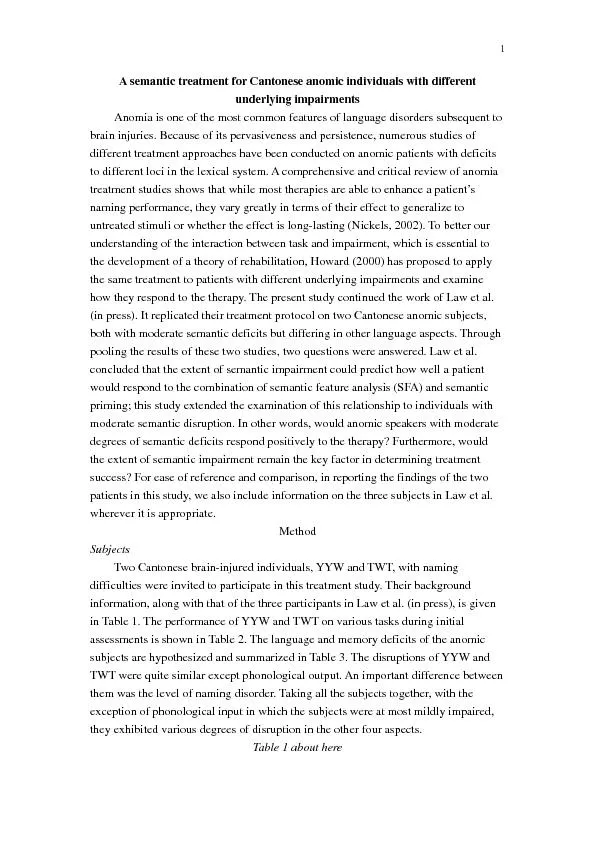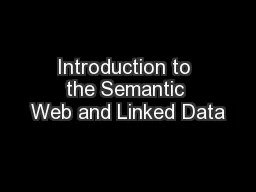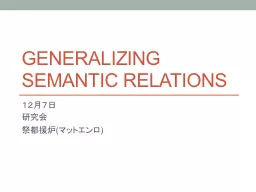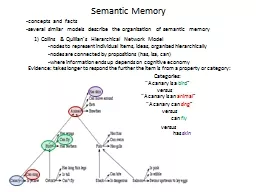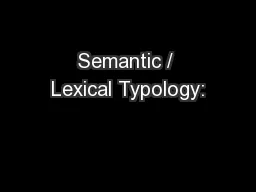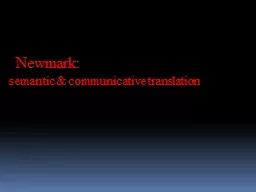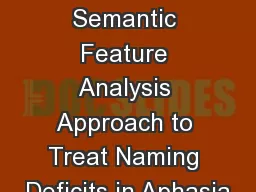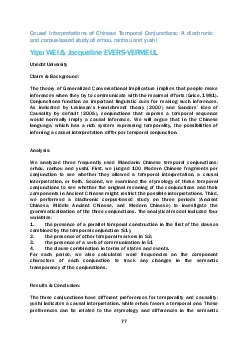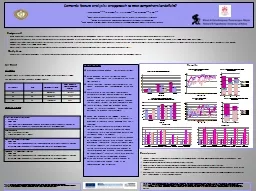PDF-A semantic treatment for Cantonese anomic individuals with different
Author : debby-jeon | Published Date : 2016-05-10
1 Anomia is one of the most common featurbrain injuries Because of its pervasiveness and persistence numerous studies of different treatment approaches to different
Presentation Embed Code
Download Presentation
Download Presentation The PPT/PDF document "A semantic treatment for Cantonese anomi..." is the property of its rightful owner. Permission is granted to download and print the materials on this website for personal, non-commercial use only, and to display it on your personal computer provided you do not modify the materials and that you retain all copyright notices contained in the materials. By downloading content from our website, you accept the terms of this agreement.
A semantic treatment for Cantonese anomic individuals with different: Transcript
Download Rules Of Document
"A semantic treatment for Cantonese anomic individuals with different"The content belongs to its owner. You may download and print it for personal use, without modification, and keep all copyright notices. By downloading, you agree to these terms.
Related Documents

